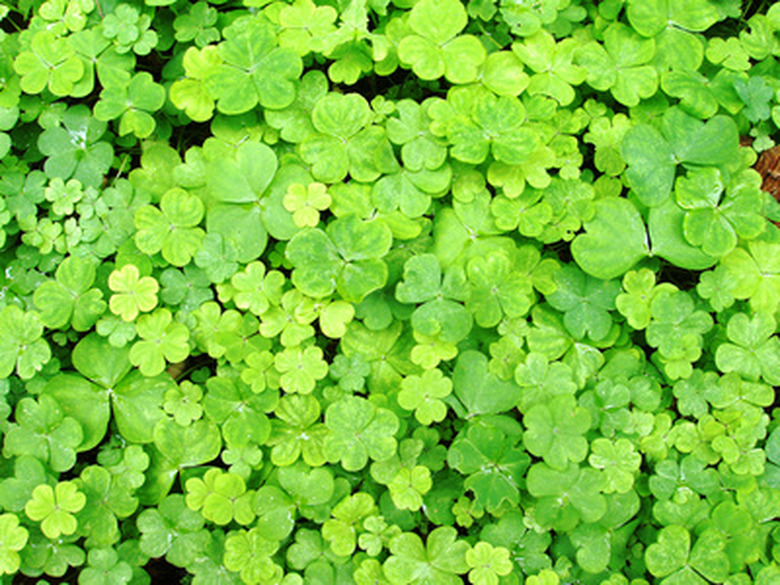Ground Cover And Clover
Clover makes a great ground cover in that it is also used as "green manure." Clover crops add nutrients back into the soil, making the soil healthy, after nutrients have been leeched from the soil by other crops. Ground cover is planted between crops (in farming) or on shallow, rocky flower beds. Clover is also used in lawns, as it makes a thick, lush, green lawn that is tolerant of high traffic and dog waste.
Planting Clover
Clover should be planted in the spring and summer for optimum results. For best germination results, dethatch the lawn, then rake it aggressively. Depending on how much clover you want in the lawn, use 2 to 8 oz. per thousand square feet. If you use 8 oz. per thousand square feet, clover will dominate over any grass that might grow in the area.
- Clover makes a great ground cover in that it is also used as "green manure." For best germination results, dethatch the lawn, then rake it aggressively.
Spreading Clover
Clover seeds are tiny, making uniform distribution more difficult that other seeds. Mix the clover seeds with Milorganite (low-analysis organic fertilizer), then spread the clover seeds with a spreader. Low-analysis fertilizer has low-release numbers (5-1-3 or 9-3-5, for example) and should be applied according to instructions. Like grass seed, the clover seed must be kept moist to germinate.
Overseeding
Many people prefer a lawn of entirely clover. Using clover as a ground cover on high-use lawns is beneficial, as the clover responds better than most grass to kids and animals playing. Clover also does not brown as easily when you have pets, especially if the pet urinates in the same place over and over. During the first year, the clover might be thin, and you might be tempted to overseed. Generally, if the first year's crop is thin, it will fill out the next year, and overseeding is not needed. If the second year's crop is thin, you might overseed.
- Clover seeds are tiny, making uniform distribution more difficult that other seeds.
- Low-analysis fertilizer has low-release numbers (5-1-3 or 9-3-5, for example) and should be applied according to instructions.
White Clover
White clover (Dutch clover) grows up to 8 inches in height. Its leaves are in three heart-shaped parts. The leaves have white crescents. The flowers are pink or white. The white clover is a perennial, so will come back each spring. It tolerates dry soil, but prefers moist soil, so white clover should be watered at least once per week with at least an inch of water during the dry seasons. It is soft to walk on and mows well.
- White clover (Dutch clover) grows up to 8 inches in height.
- The white clover is a perennial, so will come back each spring.
Red Clover
Red clover is better for acidic soils and poorly drained soils. Unmowed, it reaches heights of 18 inches. Red clover is not usually used as a ground cover because it only lives for two years (biennial). The stems are coarser than white clover—the stems do not look as lush when mowed.
Controlling Clover
Some people consider clover a weed and would not have it in their lawns or as ground cover. If you have unwanted clover, spray it with MCPP (an herbicide used to kill weeds) in the spring or in the fall. Temperatures should be below 80 degrees Fahrenheit when using MCPP, as it becomes ineffective. It takes about seven weeks for it to affect the clover, so do not respray if the clover seems unaffected. To keep clover from invading your lawn, be sure to water the lawn well during the spring and fall. Aerate the lawn every fall, and fertilize the lawn accordingly.
- Red clover is better for acidic soils and poorly drained soils.
- Some people consider clover a weed and would not have it in their lawns or as ground cover.
